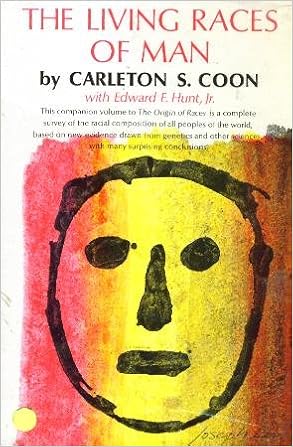
By Steve Sailer
07/13/2003
Dusty Baker, the (black) Chicago Cubs manager recently voted by players in a Sports Illustrated poll as the best manager in the game, said last week:
"[The heat] is a factor in Atlanta, it’s a factor in Cincinnati, it’s a factor in Philadelphia. We have to mix and match and try to keep guys fresh and try to have different lineups … I've got a pretty good idea [how it’s done]. My teams usually play better in the second half than they do in the first half. I think that’s because the way we spot guys and use everybody."
He then went on to violate all sorts of the rules of political correctness by opining:
"Personally, I like to play in the heat. It’s easier for me. It’s easier for most Latin guys and easier for most minority people. You don’t find too many brothers in New Hampshire and Maine and the Upper Peninsula of Michigan, right? We were brought over here for the heat, right? Isn’t that history? Weren’t we brought over because we could take the heat? Your skin color is more conducive to the heat than it is to the light-skinned people, right? You don’t see brothers running around burnt and stuff, running around with white stuff on their ears and nose and stuff."

A huge controversy erupted. Numerous sportswriters and broadcasters demanded Baker’s scalp: "Making dumb racial comments is inexcusable and has no place in society," said a columnist in Buffalo. On Fox News' Hannity & Colmes, when my friend Jon Entine, author of Taboo: Why Black Athletes Dominate Sports and Why We're Afraid to Talk About It, explained that Baker’s comments were not scientifically implausible, Righteous Rightwinger Sean Hannity exploded: "Your science is a silly science, Jon. It’s absolutely idiocy!"
Demonstrating that this Baker can stand the heat, and won’t get out of the kitchen, the three-time National League "Manager of the Year" refused to apologize.
His position: "I was just saying the facts, Jack."
Good for him.
A few thoughts —
Hmmm. The common perception among baseball fans that, say, Barry Bonds and Roger Clemens look different must be some kind of mass hallucination.
But responding to censorship by demanding it be made universal is cutting off your nose to spite your face. If whites won’t defend free speech for everybody, they can hardly expect to enjoy it themselves.
"Much of the Race Does Not Exist cant stems from the following logic (if you can call it logic): 'If there really are different racial groups, then one must be The Master Race, which means — oh my God — that Hitler Was Right! Therefore we must promote whatever ideas most confuse the public about race. Otherwise, they will learn the horrible truth and they'll all vote Nazi.'"
Look, this is one big non-sequitur. There is no race that’s supreme at all things.
To say that blacks and Latinos are better suited for hot, humid day games in July logically implies that whites may be better suited for cold, windy night games in April.
I lived within walking distance of Wrigley Field for 18 years. I've shivered through too many frigid April and May Cubs games as the wind whipped off icy Lake Michigan. I think Dusty should put some Eskimos on the Cubs.
Baker was advancing a scientific hypothesis that could be tested empirically. The data required — box scores and heat and humidity records — are available in abundance. So are thousands of baseball statistics nerds. Instead of denouncing theorizing, let’s encourage testing.
Indeed, Big League baseball managers have so much data and so much money to spend analyzing it that they don’t need to rely upon racial generalizations. If they're trying to figure out whom to rest in Houston in July (or in Milwaukee in May), they can ask their statistics geeks to develop a weather profile for each player.
My admiration for Baker is now in its fifth decade (from the late 1960s to whatever you call this decade). So I wouldn’t dismiss out of hand anything he has to say about baseball. Or anything else — during spring training, he recommended to reporters that they read Thomas Sowell’s The Economics and Politics of Race.
My guess, however: if it’s true, Baker’s Effect would be one of the more minor examples of racial differences in sports. Managers really don’t have that much impact on winning and losing, and choosing in which cities to rest players sounds even less significant than most of their other duties.
The big difference is in the individual athletes. The race gap is not huge in baseball, unlike basketball or sprinting, because baseball depends more than on eye-hand coordination. That’s a skill in which racial differentials are smaller than in, say, lower body explosive strength.
Still…in 1987, Bill James, the most important figure in the history of baseball statistics analysis (see Michael Lewis' bestseller Moneyball for how James' findings have made the Oakland A’s highly successful despite a small payroll), undertook a study called "Evaluating a Rookie" to see what best predicted long term success. Not expecting to find anything, he picked 54 pairs of players, one black and one white, who had had nearly identical first year statistics. (For example, Henry Aaron and Gus Bell). He then tabulated their career statistics.
"The results were astonishing," reported James. Of the 54 black rookies, 82 percent turned out to enjoy better careers than their white doppelgangers. In total, the blacks went on to play 48 percent more games in their careers, hit 69 percent more home runs, and steal 400 percent more bases.
Blacks seemed to be faster runners, keep their speed longer, and better combine speed with power.
Overall, the plain truth is that Dusty Baker is right about physical anthropology. Lots of visible differences in people stem from Darwinian adaptations to climate. This was studied intensively before about 1965. But since then a major effort has been made to toss this vast body of knowledge down the memory hole. For example, none of the fascinating books of the great anthropologist Carleton S. Coon (1904-1981) are in print today (although you can buy them used at Alibris.com).
As you can see from the hard time Baker is being given, these days we're supposed to celebrate diversity — not notice it.
Skin color, for example, correlates reasonably (but hardly perfectly) with intensity of sunshine. Dark skin is less prone to bad sunburns and skin cancer. On the other hand, dark skin heats up more under direct sunlight.
Neither effect is terribly important in the major leagues, however, because ballplayers are discouraged from playing naked.
Nonetheless, there are several other physiological features that matter besides skin color.

As Coon wrote in his 1965 bestseller (!), Living Races of Man:
"Comparative physiological studies of Negroes and whites have shown than Negroes surpass the whites in tolerance of damp heat but are more vulnerable both to dry heat and to cold."
There are various causes of this. Two that are particularly relevant to sports performance: shape and body fat percentage.
First, bodies with higher surface to mass ratios shed heat faster. Blacks tend to have longer limbs and smaller torsos than whites. Michael Jordan, for example, has a famously high center of gravity.
Second, in Coon’s words, black males tend to have "when young and in good health, little subcutaneous fat."
That means they tend to be less insulated than whites, allowing them to disperse heat more easily. And blacks in top shape have a higher percentage of muscle, making them quicker on average. (Jordan, for example, maintained a phenomenal three percent body fat percentage, which is why he never learned how to swim — he sinks like a stone.)
Still, a team should be able to demand that its million-dollar white ballplayers keep themselves trim enough to avoid heatstroke.
Dusty Baker is right about history too. The single biggest reason that blacks outside of Africa tended to live in hot zones has been their superior resistance to warm weather diseases. Before clean water supplies and antibiotics, blacks simply outsurvived other races in hot climates. Fortunately, modern life makes this less important.
On four continents, there are regions where blacks lived primarily in the hot lowlands while other races clustered mostly in the cooler highlands.
For example, in the Andean countries of northeast South America, blacks tend to be found near sea level, with whites higher up, while only mestizos and Indians thrived at the very highest elevations.
Similarly, T.E. Lawrence noted that on the Red Sea coast below Mecca, Arabs stuck to the hills and deserts and assigned their black slaves to farm the "feverish valleys of running water, whose climate was too bad for Arab labor, but where they flourished."
Similarly, in Madagascar, the black people live primarily in the lowlands, while the inhabitants of uplands trace their descent back mostly to Southeast Asia.
Here in the United States, the Scotch-Irish from the north of Britain flocked to the Appalachian highlands, shunning the fever swamps of the Tidewater.
Indeed, as Brandeis historian David Hackett Fischer pointed out in his famous Albion’s Seed, these racial differences had an enormous impact on the history of America. He notes that the cold climate of colonial Massachusetts
"proved to be exceptionally dangerous to immigrants from tropical Africa, who suffered severely from pulmonary infections in New England winters. Black death rates in colonial Massachusetts were twice as high as whites' — a pattern very different from Virginia where mortality rates for the two races were not so far apart, and still more different from South Carolina where white death rates were higher than those of blacks. So high was mortality among African immigrants in New England that race slavery was not viable on a large scale, despite many attempts to introduce it. Slavery was not impossible in this region, but the human and material costs were higher than many wished to pay. A labor system which was fundamentally hostile to the Puritan ethos of New England was kept at bay partly by the climate."
Not surprisingly, in the 19th Century, Massachusetts became the home of abolitionism. South Carolina became the home of secession.
The bottom line: Dusty Baker was right. He was indeed "just saying the facts."
That’s why he’s in trouble.
And that, in turn, is why America is in trouble.
[Steve Sailer is founder of the Human Biodiversity Institute and movie critic for The American Conservative. His website www.iSteve.blogspot.com features his daily blog.]
This is a content archive of VDARE.com, which Letitia James forced off of the Internet using lawfare.